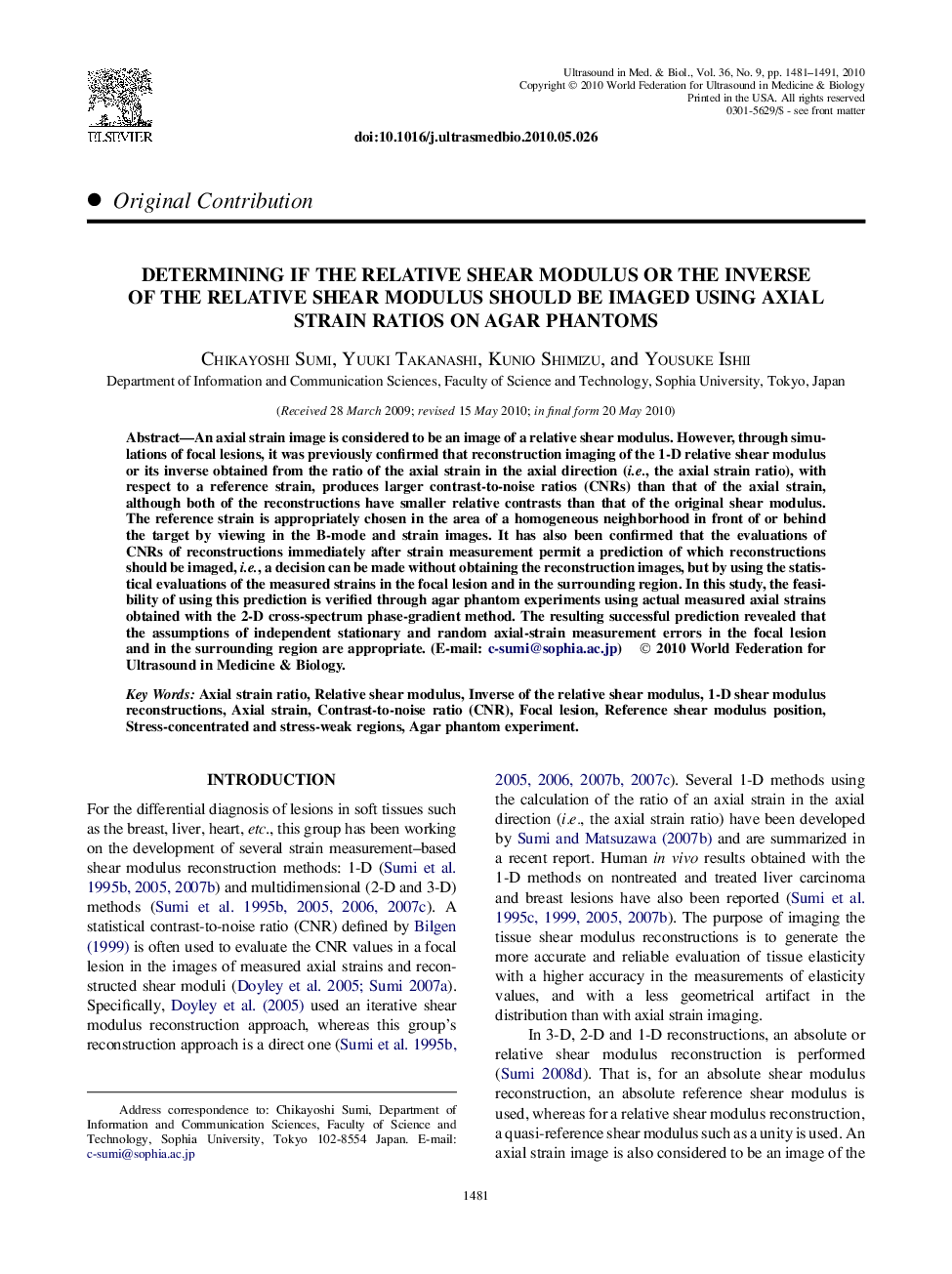| Article ID | Journal | Published Year | Pages | File Type |
|---|---|---|---|---|
| 1761542 | Ultrasound in Medicine & Biology | 2010 | 11 Pages |
Abstract
An axial strain image is considered to be an image of a relative shear modulus. However, through simulations of focal lesions, it was previously confirmed that reconstruction imaging of the 1-D relative shear modulus or its inverse obtained from the ratio of the axial strain in the axial direction (i.e., the axial strain ratio), with respect to a reference strain, produces larger contrast-to-noise ratios (CNRs) than that of the axial strain, although both of the reconstructions have smaller relative contrasts than that of the original shear modulus. The reference strain is appropriately chosen in the area of a homogeneous neighborhood in front of or behind the target by viewing in the B-mode and strain images. It has also been confirmed that the evaluations of CNRs of reconstructions immediately after strain measurement permit a prediction of which reconstructions should be imaged, i.e., a decision can be made without obtaining the reconstruction images, but by using the statistical evaluations of the measured strains in the focal lesion and in the surrounding region. In this study, the feasibility of using this prediction is verified through agar phantom experiments using actual measured axial strains obtained with the 2-D cross-spectrum phase-gradient method. The resulting successful prediction revealed that the assumptions of independent stationary and random axial-strain measurement errors in the focal lesion and in the surrounding region are appropriate. (E-mail: c-sumi@sophia.ac.jp)
Related Topics
Physical Sciences and Engineering
Physics and Astronomy
Acoustics and Ultrasonics
Authors
Chikayoshi Sumi, Yuuki Takanashi, Kunio Shimizu, Yousuke Ishii,
